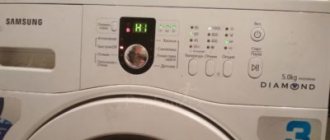Reasons why brown water comes out of your iron
The device has a built-in small water tank. When heated, steam is generated, which is supplied through special valves to the holes in the sole.
When the electrical appliance is working properly, the volume of liquid required for the selected mode evaporates completely. But if the iron begins to leave brown marks, there may be several reasons.
Errors during operation
One of the main reasons for the appearance of scale is the use of hard tap water with iron impurities. The iron's built-in cleaning system does not cope well, and over time, rust accumulates, causing damage to parts and corrosion. You can avoid this by pouring distilled water into the iron.
Faulty parts
If the thermostat does not work well, then the electrical appliance does not have time to cool down to the set temperature. The sole becomes so hot that even heat-resistant silicone parts begin to melt.
Instead of steam, brown water or slurry comes out of the holes. It is dangerous to use such an iron; it must be replaced or taken for repairs.
A malfunctioning thermostat can cause the iron to overheat and break.
You should not wash it yourself with descaling agents, as they contain aggressive substances that will only accelerate the destruction of silicone.
Corrosion inside the iron
This happens when the metal parts of the device are damaged or initially of poor quality. If you don’t take action right away, then with each ironing, there will be more rust.
Further operation of the iron depends on the degree of corrosion. If it is strong, you will have to look for a new technique.
Self-cleaning function
The newest models have a self-cleaning function that must be used periodically. Now you will find out how to do this.
- Fill the container to the maximum.
- We set the maximum temperature without turning on steaming.
- We place a basin under our iron and shake it.
- We activate the self-cleaning mode by pressing the button. Don't be alarmed if some liquid leaks. This means that you did well, you did everything right, and your iron was cleaned.
Let it cool, then rinse.
Ways to solve the problem
The main condition for long-term operation of steam equipment is proper operation and regular maintenance. Most modern appliances are equipped with a self-cleaning function, so no additional measures are required.
Only irons that do not have this technology can be washed. Like other devices, you can clean the water tank in the iron using citric acid:
- Dilute 20 g of powder in a glass of water, stir until the grains disappear.
- Pour into the boiler hole.
- Enable maximum mode.
- Disconnect the iron.
- Holding it in your hand over the bathtub or sink, press the steam button.
- Repeat until all the liquid has evaporated.
In conclusion, check if it was possible to clean it. Fill with water, heat up the iron, do a couple of heat strokes. If nothing flows from the holes and the steam does not stain the fabric, you can iron it. Are there any brown marks left? Will have to clean it again.
This method will help if the cause of the brown liquid is poor quality water. If the silicone is destroyed and metal parts rust, the procedure is useless and sometimes dangerous.
Folk remedies
You can also clean your ironing device from traces of corrosion, lime and fungus using traditional methods. Mold marks will go away if you use recipes against rust and scale, but to remove mold forever, it is better to choose specific products.
Recipes against rust and scale
Cleaning the iron with vinegar
If the appliance spits out rusty liquid, or white scale stains remain on the fabric, compounds with high acidity are used. Usually vinegar or citric acid is used, but you can also use sparkling water.
Cleaning the device with vinegar:
- Pour vinegar mixed with water in equal parts into the iron, about a third of the capacity.
- Place the iron vertically and heat it to maximum, wait 5-10 minutes. During this time, the heating and cooling cycle will repeat, do not turn it off.
- Lift the appliance horizontally above a large bowl and press the steam release button. As a result, rusty liquid should flow out of the plantar holes. Let the steam flow until all dirt comes out of the ironing device.
- Fill the reservoir with clean water and heat the machine again to get rid of any remaining dirt and vinegar. Once or twice, without removing the basin, let off the steam.
Finally, pour out the water and wipe the surface and holes with a clean cloth.
Citric acid is even easier to use because it does not produce such unpleasant-smelling fumes as vinegar. You need to dilute a 25-gram package in 250 ml of warm water until completely dissolved. Then heat the iron and pour in the resulting mixture, wait 5-10 minutes.
Draining dirt from the iron
Hold the device in a horizontal position over a basin and release steam several times so that dirty liquid comes out of the holes. After removing it, you need to pour out the liquid, pour in clean water and perform the same steps to remove any remaining scale. Then dry the sole and holes with a piece of cotton cloth.
It is safest to clean your iron with carbonated water. It is used not only for ironing equipment, but also for washing machines and kettles. You must proceed as follows:
- Fill the reservoir with water and heat the device at high temperatures.
- Disconnect from power supply.
- Shake the device.
- Place a piece of cotton under the iron and press the steam release button several times.
- Pour out the remaining water when the appliance has cooled completely.
Perform the manipulation several more times until completely cleaned.
Mold control compounds
An effective remedy for mold in the iron is tea tree oil.
Spots with a brownish, gray or greenish tint remaining on the fabric indicate the appearance of mold in the water compartment, and bright green spots indicate the growth of algae.
Ways to clean the inside of an iron from mold at home:
- Bleach. When preparing the solution, take one part of the drug to ten parts of water. The resulting composition is poured into the container. After about five minutes, the steam function turns on and the dirt comes down through the holes. Finally, the container is rinsed with boiled water.
- Ammonia. You can achieve the effect by making a mixture of water and alcohol and filling the water compartment with it for several hours. The solution is removed using the steam extraction function. Additionally, the steam outlets are cleaned. After cleansing, ammonia is washed off with boiled water.
- Hydrogen peroxide. The drug is poured into the water compartment, after ten minutes it can be cleaned. To speed up the process, use a narrow, hard brush.
- Tea tree oil. Enough 10 drops per 20 ml of water. The composition is poured into the reservoir of the device. Then you need to remove the liquid through the steam holes.
An old effective remedy is baking soda. It is non-toxic and gently acts on the walls of the container, removing mold bacteria and algae. The advantage of this method is that soda is able to absorb moisture, thereby preventing the further appearance of microorganisms. Clean the tank with an aqueous solution at the rate of 1/4 large spoon of powder per glass of boiled water.
Borax has proven itself in the fight against mold.
If the water container is covered with algae that forms a green coating, it is cleaned with borax. It is a natural, chemical-free, non-toxic product suitable for cleaning drains and toilets. Can be used as an insecticide in the fight against mold.
To remove greens from the device’s reservoir, you must:
- dilute 200 ml of the drug in 2.5 liters of water;
- Fill the container with the solution and clean it with a stiff brush;
- remove the remaining composition with purified water.
One rinse is enough to remove excess solution. The product remaining on the surface of the tank is not removed, as it will prevent the growth of bacteria.
Preventive actions
In order for the iron to remain in working condition longer, it is necessary to comply with its operating conditions. General recommendations for steam generator type equipment:
- Fill the tank only with water recommended by the manufacturer.
- If the steam generator is designed for tap water, it is better to mix it in half with distilled water to eliminate increased hardness.
- After finishing ironing, drain off the remaining water.
- Close the steam regulator.
- Set the thermostat to “0”.
- Store the iron in an upright position (unless otherwise instructed). This will protect the parts from corrosion, and the holes in the sole from becoming clogged with scale.
- To clean the boiler, use the method prescribed in the instructions. Do not wash the device with solvents, vinegar, or homemade products. If necessary, it is better to use a special anti-scale agent designed for irons.
- Clean anti-lime cartridges regularly: remove the device, place it in a glass with pure lemon juice or white vinegar for 4 hours.
Do I need to empty the iron after every ironing? Necessarily. If leftovers are not disposed of, they can cause corrosion of metal parts.
Troubleshooting
Not all malfunctions should be addressed to a service center; in some cases, you can eliminate the cause of the malfunction on your own. The main cause of leakage is the build-up of water stone (limescale). Therefore, we are required to clean the steamer from scale inside. Let's look at some ways.
Steaming the iron
The method is suitable for devices with a metal sole. To perform steaming, you need to:
- place the device on a baking sheet and pour about 1-1.5 cm of water to the bottom;
- pour in vinegar (0.2 liters per liter of water);
- put on gas, boil and leave to cool.
Repeat the procedure twice, then rinse and wipe.
How to properly pour water into an iron
To fill the reservoir, there is a special cup with a narrow spout, which is included with the appliance. If the container is lost, you can replace it with a similar object or funnel. The inner walls had to be clean so that no foreign substances could get into the tank.
Before adding water, you need to read the instructions for the procedure. Since different models of irons are designed differently, even from the same manufacturer, the method of filling the reservoir may vary. General recommendations are as follows:
- Disconnect the iron from the power supply.
- Depending on the model of the iron, place it vertically or on the soleplate.
- Set to “no steam” position.
- Open the reservoir lid.
- Pour in water from a measuring cup. During filling, it must flow continuously so that an air lock does not form.
Be especially careful when pouring water into a hot iron. If the jet is too strong or wide, it will cause boiling water to escape and cause burns.
- Check the water level: it should not exceed about 0 on the housing.
- Close the lid and turn on the iron.
- Set the steam mode and start ironing.
- If the model is equipped with a removable reservoir, then before removing it for filling, the iron must be turned off.
Preventing iron stains on clothes
Ironing things, despite the simplicity of the process, requires careful implementation. It is necessary to clean the iron regularly - for example, with diluted citric acid, so that scale does not form. It can get on clothes even without a burn - large stains in the form of rusty drops will definitely ruin the appearance.
Usually, while ironing, the housewife tries to do several things at once or is in a hurry early in the morning - both situations are fraught with the appearance of burns on the fabric. Therefore, ironing should be carried out calmly, without trying to speed up the process through intense movements and pressure. If a tiny scorch appears, you can try to correct the situation as follows: moisten the spot and iron it through gauze. Iron marks are processed from the reverse side. A sure sign of success is the appearance of yellow spots on the gauze.
Comment! Before using the iron, you should always check that it is working properly.
The label of any item indicates acceptable care conditions - ironing and washing. You just need to adhere to temperature conditions to avoid damage to things. For synthetic fabrics, the acceptable range is as follows:
- elastane, polyamide – up to 75 degrees;
- nylon - up to 100;
- lavsan – 120;
- polyester – up to 150.
Acrylic needs a more delicate treatment, and therefore can only be processed with steam. This rule must be taken into account every time ironing.
What to do with scorch marks
You can remove scorch marks without chemical exposure under certain conditions. Stains on dense, thick materials are removed using sandpaper, a manicure file, a razor, or pumice. Using mechanical action, the top layer of jeans with burnt particles is removed. Be careful not to stretch the fabric when scraping.
Small traces can be removed by steaming. Prepare gauze and towel. Place the damaged clothing on a towel, moisten the gauze, fold and cover the items. Steam the damaged area several times, being careful not to press the iron.
Errors during operation
In addition to those listed, there are other reasons for water running onto the laundry.
- When using a steam generator with a free-standing water tank, you may be placing it above the level of the ironing board or on the board itself. In this case, boiling water will enter the hose and flow down it, forming a water plug. Steam, trying to pass under pressure to the outlet, pushes this plug forward. This is how drops form on the sole. This is not a breakdown, don't be afraid. You need to move the base under the board. Place a stool or something similar nearby, then splashes of boiling water from the base, even if they get into the hose, will flow back and the steam will escape unhindered.
- If you iron often and a lot, and begin to notice that the laundry becomes damp during ironing, then the reason may be hidden in the ironing board itself. It may happen that the coating on it has worn out, and as a result of powerful steaming, liquid began to accumulate in the ironing table. Solution: Renew the cover of the board under the cover.











